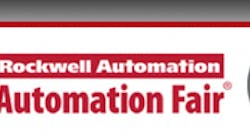Even compared to all the latest software, cloud services, big data and Industrial Internet of Things (IIoT) promising big money, simply planning ahead can do the most to optimize operations, improve productivity and increase profits, according to the system integration experts at Maverick Technologies, which is a Rockwell Automation company.
Despite the usual cost constraints, market pressures and regulatory requirements, "Many high-volume commodity chemical manufacturers and low-volume chemical producers are benefiting from recent upticks in their project numbers and individual markets, which are being aided by flat prices and a glut of natural gas, which is a key building block of ethylene used to make many chemicals," reported Brian Batts, proposal and estimating group manager at Maverick, and Chuck Toth, business development manager at Maverick.
Batts and Toth presented "Best practices and how to maximize the benefits of your next automation upgrade" at the Chemical/Specialty Chemical Industry Forum at the Automation Fair event this week in Houston.
Seek advantages soon
"All of a sudden, many users are finding they can do more capital expenditure (CapEx) projects, but we recommend that they don't simply migrate the code they had before, and instead look at all the efficiencies they might be able to gain, whether it's from finally ripping and replacing obsolete equipment or just shutting down for four to eight hours to do a simpler upgrade," said Toth. "There's billions of dollars of legacy hardware out there and millions of I/O points that need to be migrated, but rather than just replace what they have to, a CapEx project can be an opportunity to take advantage of some new technologies, and address some longstanding problems.
“These opportunities can include rationalizing and eliminating nuisance alarms, which might cause operators to ignore serious problems in the future, or upgrading to grayscale HMI displays that can reduce operator fatigue and improve awareness."
Batts and Toth added that many manufacturers are trying to produce more diverse chemical formulations, such as specialized coatings and plastics to meet consumer demands, by using existing equipment with controls and bolt-on software. "The loop from consumers to producers is faster, too," said Batts. "Where most chemical producers didn't relate to consumers much in the past, they now have to respond to demands for products with no BPA in them."
Early equals inexpensive
To identify and take advantage of opportunities during automation upgrades and routine operations, these efforts must be carried out during the three main stages of any project, and earlier is always less costly and simpler, and later is always more costly and complex. These stages are:
- Definition: The early planning and scope identification stage. “Our motto is, ‘Don't replicate, innovate,’” said Batts. "This means asking, what opportunities can I take advantage of since we're already planning a CapEx project?" The definition stage also includes three front-end loading (FEL) phases: FEL 1 for identifying business needs; FEL 2 for technical selection; and FEL 3 for construction-level planning. Functional specifications should be developed at these stages
- Design and development: When drawings are produced, graphics are developed, and technical packages are tested in the client's application and facility. This is also the stage where functional specifications are tested against reality.
- Construction and commissioning: When all equipment is installed and wired, and receives final checkout before startup.
"Many companies skimp at the definition stage, but this is where they should spend, because that's where it costs the least, and where it's easiest to make changes that can have the greatest impact on the successful outcome of a project," explained Batts. "However, as they progress to design/development and construction/commissioning, the cost and complexity of changes goes up, and the chance that those changes can help goes down, especially when you get out into the field."
Opportunity assessments
Maverick's tactical advice on seeking opportunities and including them at the project definition stage can be used equally well for alarm rationalization, HMI effectiveness and improved cybersecurity, which is more effective if it can be "baked into" applications and networks at the beginning, instead of being added later.
"As information technology (IT) and operations technology (OT) converge, there's a lot more connections and chances for data availability, but it's crucial to have good definition and design for cybersecurity, with firewalls and demilitarized zones (DMZ) that prevent vulnerable pathways from the plant floor and control system to the business levels," added Batts. "This can be done at the definition stage, and it's especially important for chemical manufacturers that are protecting intellectual property as well as operations."
Just as process engineers do risk assessments (RA) for safety and cybersecurity projects, and determine possible points of failure or vulnerabilities, they can use the same mindset to look for opportunities for positive gains in their applications and facilities, and add them to the definition and/or design stages. "While RAs seek possible failures or risks to budgets, opportunity assessments (OA) can be done at each project stage, and it’s important to involve the whole team. If you can do an RA at the definition stage, you can maybe design out and mitigate problems at no cost that would be very expensive later. With an OA, you can possibly add a change early on for very little cost that can have a big financial benefit later."





